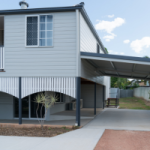Are your clients maximising depreciation on renovations? #5 July 2023
Are your clients maximising the depreciation on renovations?
Chances are they’re not.
There can be a lot of depreciation in renovations and lots of people don’t claim it.
Why?
Sometimes it’s because the property is old and they assume with an old property there is nothing that can be claimed.
Sometimes it’s because they think renos done by previous owners can’t be claimed.
Sometimes it’s because they don’t even know there have been renovations.
Sometimes it’s because their accountant doesn’t realise the opportunity.
Renovations can be confusing and we get lots of questions about them from clients and accountants.
Most of the Depreciation Schedules we do on older properties have been renovated. It stands to reason that a house built, say, 50 years ago will have had some work done to it.
Over the last 20 years, we have done tens of thousands of Depreciation Schedules on older properties and we can spot a renovation a mile off.
Do you have a client with an older property that you’d like us to have a look at? Make a no-obligation enquiry here.
And of course if your clients have done a renovation, you’ll need to understand the blurry line between improvements and repairs, find out more about that here.
Key Points
- A renovation is any work that changes or adds to a property.
- If a property has had work done to it in the last 30 years, that work can be depreciated regardless of the age of the original building.
- When a client buys an investment property, they are entitled to depreciate any eligible Capital Works.
- We look at listings every day with clients on the phone, and we can often spot renovations the client did not know were there. It’s always worth a call.
What is a renovation?

Let’s back up a bit. The ATO talk more about ‘improvements’. But ‘renovations’ is a term more familiar to clients and that’s what we use.
So what constitutes a renovation for our purposes? A renovation is any work that changes or adds to a property.
The most common structural renovation is a new kitchen.
Second would be a new bathroom – original bathrooms tend to last longer than kitchens.
Decks and pergolas are common additions.
Then there are more significant works like second storeys or rear additions.
Cosmetic changes can also come under the blanket term ‘renovations’: new carpet, paint, light fittings, appliances. Of course second hand Assets can’t be depreciated anymore, but we still include them in the Depreciation Schedule and note the deferred depreciation so you can possibly pick it up later when doing CGT calcs.
You can read more about the changed treatment of second hand Assets in our previous edition of ‘Something You Didn’t Know About Depreciation’.
‘My property is old so there is no depreciation in it’

Clients say this all the time, but it’s usually not the case.
Would it surprise you to know that 74% of the Depreciation Schedules we do on older properties have renovations in the mix?
It’s 2023 now. If a property has had work done to it in the last 30 years, that work can be depreciated regardless of the age of the original building.
Consider the housing stock in the middle ring of suburbs in all our capital cities. Some of those houses are 200 years old. Many are at least 100 years old.
All have been renovated.
And many in the last 20 years or so.
Sometimes it’s hard to keep or attract a tenant if a property has not been renovated.
From your perspective, it’s best to assume a client’s older property has been renovated and then let us confirm either way. There are always photos online and in a few minutes one of our Quantity Surveyors can tell whether the property has been renovated, when it might have happened and in most cases the approximate cost of those renovations – and the resulting Capital Works deduction.
That’s why you use Depreciator, because we have the experience and the skills to make these sorts of determinations to guide your clients.
‘The renovations were done before I bought the property. I can’t claim them.’
 Lots of clients think this is the case and this is something they say often.
Lots of clients think this is the case and this is something they say often.
When a client buys an investment property, they are entitled to depreciate any eligible Capital Works.
If the property was built after September 1987, there will still be some depreciation in the original building – read more about this here.
But it’s likely that property will have had some renovations, and they can also be depreciated.
Or the property might be very old and all the depreciation will be in the renovations.
Let’s think again about those original properties in the middle ring of the capital cities, the properties that can be up to 100 years old.
A typical renovation would be to open up the back, bung on a deck, relocate the kitchen and add a second bathroom.
Even 20 years ago, this could have cost $200K. So that’s $5,000 per year that can be claimed by the new owner for the next 20 years on just that renovation.
The next question client’s ask is, ‘But how do I know what the previous owners spent?’
That’s an easy one to answer. ‘That’s why you need us,’ we tell them. We use Quantity Surveyors, unlike many other Depreciation Schedule providers, and they are very good at costing historical Capital Works.
‘My property has not been renovated.’
 We are often surprised that clients have no idea their property has been renovated.
We are often surprised that clients have no idea their property has been renovated.
But good on them for making an enquiry. We look at listings every day while clients are on the phone and can often spot renovations the client did not know were there.
Even something modest like a new kitchen and bathroom and a paint job in a 1970s walk-up flat can throw off over $1,000 per year in depreciation. That’s not a huge amount, but worth claiming.
Then there are the clients who know a property has had some work done, but have no idea how much. This is typical with older properties. Last month, a client called up about a Queenslander they had bought. It was obvious that it had a recent kitchen and bathroom and a paint inside and out, but our Quantity Surveyor who went there could also tell the house had been moved on the block and lifted to create habitable spaces downstairs. The annual depreciation on that very old Queenslander is over $8,000 per year.
Enquire now for a property-specific assessment
Has this article reminded you about a client’s investment property?
Make a no-obligation enquiry and rely on our 20-plus years of experience in estimating depreciation returns.




